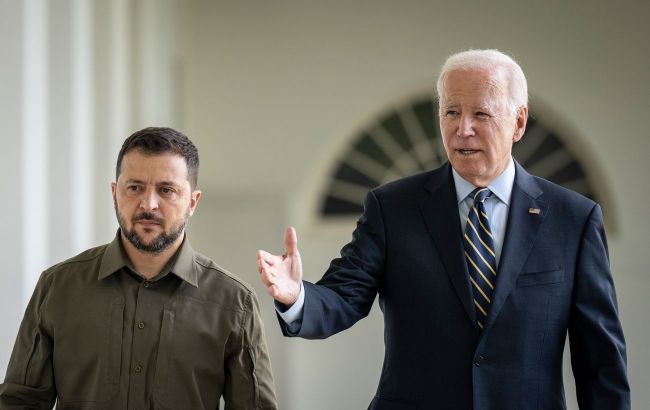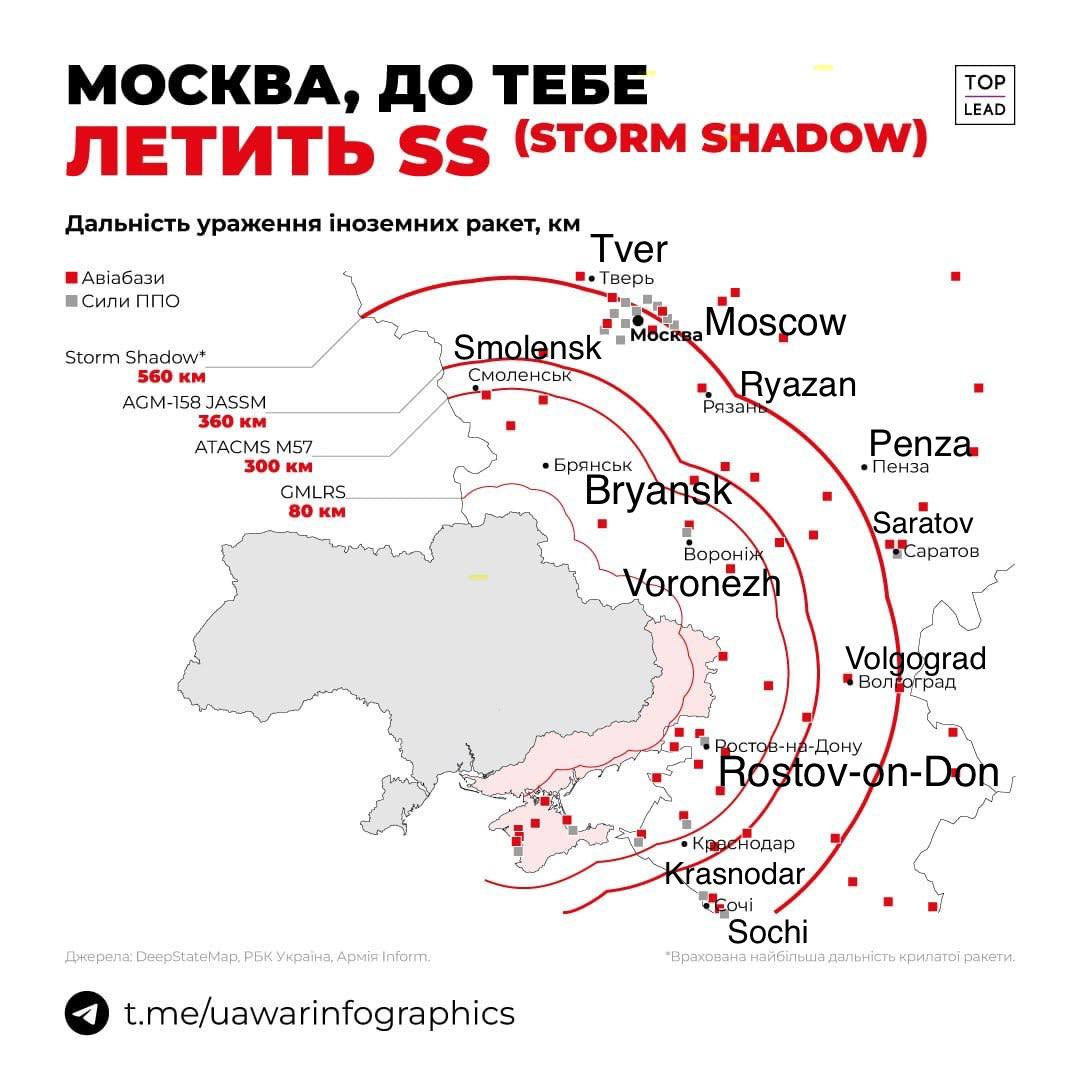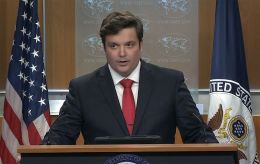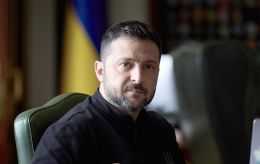Ukraine's new strike capabilities: Can 'green light' from allies change course of war
 Photo: Volodymyr Zelenskyy may have secured Joe Biden's approval for long-range missile strikes deep into Russia (Getty Images)
Photo: Volodymyr Zelenskyy may have secured Joe Biden's approval for long-range missile strikes deep into Russia (Getty Images)
After months of constant requests, Ukraine is approaching strikes on Russian territory with Western long-range weapons. At least, this is what several leading media outlets reported ahead of time, although there has been no official confirmation yet.
What is known at this point, which missiles and targets could be struck on enemy territory, and whether another "green light" from partners could change the course of the war — are covered in the RBC-Ukraine material.
Contents
- Will ATACMS and Storm Shadow 'fly' to Russia? What is known
- How the world is reacting to rumors of authorization for strikes on Russia
- Who, what, and where could become targets of ATACMS and Storm Shadow
- Will the West's approval change the course of the war, and how will Putin respond
Will ATACMS and Storm Shadow 'fly' to Russia? What is known
The first to report a significant shift in US policy was The New York Times. According to its sources, two months before the end of his term, President Joe Biden authorized strikes with ATACMS ballistic missiles deep into Russian territory.
The news agency, citing sources, states that the trigger for this decision was Moscow's readiness to deploy North Korean troops in the fight against Ukraine. One of the targets could be a signal to Pyongyang not to send more soldiers to Russia.
US officials are concerned that such a move might prompt Vladimir Putin to take retaliatory actions against the US and its allies. Others believe these concerns are exaggerated, according to the NYT. According to Reuters, the first strike on Russian territory could happen in the coming days.
On the evening of November 17, the French newspaper Le Figaro reported that France and Britain had given the "green light" for strikes with Storm Shadow/SCALP cruise missiles. This wave of materials prompted a reaction from Ukrainian President Volodymyr Zelenskyy. He reminded that he had presented a victory plan to partners, one of the points of which is long-range capabilities. However, he did not confirm authorization for the strikes.
"Such things are not announced. The missiles will speak for themselves," he emphasized.
In the morning, the information about Storm Shadow/SCALP disappeared from Le Figaro's news. The British government refrained from commenting but noted that London does not intend to follow Washington's lead in everything. However, the use of Storm Shadow depends on the US position, as the missiles contain American components.

Photo: Western media report that Joe Biden authorized ATACMS missile strikes deep into Russia (Getty Images)
France's Minister for European Affairs, Jean-Noël Barrot, notes that authorization for SCALP missile strikes remains one of the possible options, but there have been no changes as of yet. According to the White House press pool, Biden himself avoided answering questions about ATACMS. National Security Advisor Deputy John Finer only reminded that the US had promised to respond to the involvement of North Korean soldiers in the war against Ukraine, though he did not specify what that response would entail.
Why are these rumors appearing now? The logic is that lifting restrictions on strikes against Russia could indeed be a response to the massive attack on energy infrastructure on November 17 and the involvement of North Korean military forces, explains Volodymyr Fesenko, Chairman of the Board of the Penta Center for Applied Political Studies.
"In fact, right now it's more of an informational hint at a response. What's interesting is how it was presented: Biden didn't directly say it, and it's not by accident that France has a dual position. This is called a strategy of ambiguity. Let the enemy not know whether a decision has been made or not," he told the RBC-Ukraine YouTube channel.
According to a senior source in military-political circles, the UK and France have indeed authorized Storm Shadow/SCALP strikes, but within the borders of the Kursk region.
If the information about Storm Shadow is confirmed, it would not only mean an expanded strike zone but also the provision of highly accurate maps of Russian terrain, used in the TERCOM navigation system, says the specialized Defense Express resource. This could open the way for Ukrainian forces to receive AGM-158 JASSM missiles, with a range of 370 to 1000 km, even under Biden's administration.
How the world is reacting to rumors of authorization for strikes on Russia
Reactions are active from both Ukraine's partners and opponents of military support. Lithuanian President Gitanas Nausėda believes that lifting the restrictions on ATACMS and Storm Shadow/SCALP strikes would be a turning point.
EU foreign policy chief Josep Borrell has called on EU countries to support the US decision if it is confirmed. German Foreign Minister Annalena Baerbock says this would not represent a shift in Western strategy but rather a significant strengthening of it.
Her Lithuanian counterpart, Gabrielius Landsbergis, insists on a reassessment of the approach to aid. "We all need a new strategy for Ukraine's victory, based on strength and ability to mobilize, not on fear of escalation," he stated.
Polish President Andrzej Duda criticized German Chancellor Olaf Scholz's call to Kremlin leader Vladimir Putin and believes that allowing strikes on Russia with Western weapons would be a turning point.
"This decision was very necessary ... Russia sees that Ukraine enjoys strong support and that the West's position is unyielding and determined. It's a very important, potentially decisive moment in this war," he said.
Italian Foreign Minister Antonio Tajani spoke of Italy's unchanged position, meaning Ukraine will only be able to use the supplied weapons on its own territory.
Hungarian Foreign Minister Péter Szijjártó predictably called the possible decision by Washington an "expansion of the war to global scales." According to him, by doing so, the Biden administration is making a "final desperate attack on the new reality." Slovak Prime Minister Robert Fico considers this an "unprecedented escalation aimed at disrupting or delaying peace negotiations."
Chinese Foreign Ministry spokesperson Lin Jian stated that it is in the interest of all parties to have a "quick ceasefire and a political solution." Donald Trump Jr., son of the elected US president, sharply criticized the potential initiative of the White House. "The Military Industrial Complex seems to want to make sure they get World War 3 going before my father has a chance to create peace and save lives... Imbeciles!" he wrote on his Twitter (X) account.
Who, what, and where could become targets of ATACMS and Storm Shadow
Immediately after the first materials in the media, maps appeared that broadly explained which Russian territories fall within the range of each weapon.
For example, GMLRS rockets (with a range of 80 km, launched from HIMARS systems) can reach border areas in four regions. ATACMS, with a range of 300 km, could target Bryansk, Kursk, Voronezh, Rostov, and such a "high-value target" as the Crimean Bridge. Meanwhile, the Storm Shadow, with a range of 560 km, could reach Moscow, Ryazan, Volgograd, Krasnodar, and others.

Photo: the reach of Western missiles on Russian territory (infographic t.me/uawarinfographics)
However, according to Axios, the removal of restrictions will apply only to the Kursk region. The goal is to deter the Russian military’s advance, supported by North Korean units, toward a salient currently controlled by Ukraine. The expectation is that this will lead to Pyongyang abandoning the deployment of additional forces.
In a comment to The War Zone, the head of Ukrainian military intelligence, Kyrylo Budanov, stated that there are currently 12,000 North Korean soldiers in the Kursk region. The total enemy force in the area amounts to 50,000.
For a long time, Ukraine has complained that restrictions on strikes have hampered its efforts. Washington defended its position out of concern for further escalation. In early August, following a sudden invasion of the Kursk region, Kyiv intensified its pressure. Reports indicated the submission of a target list that included airfields used to launch Kh-29 air-to-surface missiles at Ukrainian cities. Since then, Russia has withdrawn nearly all aircraft from the reach of ATACMS.
According to the interactive map from the Institute for the Study of War (ISW), there are at least 245 identified military targets within a 300 km radius. If the restrictions are lifted only for the Kursk region, there will remain just 15 known targets, though the list could be longer when factoring in training grounds for North Korean soldiers.
Therefore, potential targets in the Kursk region could include logistics hubs, supply lines, ammunition depots, and large concentrations of personnel.
"First and foremost, this is strategic deterrence with conventional weapons. Secondly, we need to be allowed to strike high-priority targets further from the border. I would focus not only on military targets but also on military-industrial facilities, refueling stations, power grids, and so on. Our strategy will depend on how many and what range of ATACMS we receive," an unnamed Ukrainian senior officer told The War Zone.

Photo: map of identified military targets on Russian territory (understandingwar.org)
Aviation expert Kostiantyn Kryvolap describes the limitations to just ATACMS and the Kursk region as a disappointment. In his opinion, HIMARS strikes are sufficient for the Kursk region and the border areas of other regions.
"There is no scope for ATACMS with a 300 km range there, no major structures or other 'tasty targets.' To use rockets with a cluster munition warhead, a large concentration of personnel and equipment is needed, and the Russians are not that foolish... Another issue is if we enter the Belgorod region and there are North Korean soldiers there, would ATACMS be allowed? And if they flee from the Kursk region? There are still more questions than real effects from the permission. But this is my opinion, and maybe it’s emotional," said the source.
Retired Lieutenant General and former Deputy Chief of the General Staff of the Armed Forces of Ukraine, Ihor Romanenko, hopes that the potential "green light" for ATACMS will lead to something bigger. Lifting the ban for the Kursk region is undoubtedly necessary, but such a need exists on other sections of the front.
"We have a small number of them (ATACMS rockets - ed.), but we hope this is just the beginning. Western partners are sticking to their 'escalation control' algorithm... But the ban on using Storm Shadow/SCALP must be also lifted. This will be important support for Ukraine's Defense Forces," he stressed.
Meanwhile, The Washington Post, citing unnamed officials, suggests that Ukraine may not be limited to just the Kursk region. This means the use of rockets could extend to other Russian territories.
Will the West's approval change the course of the war, and how will Putin respond
American "hawks" blame Joe Biden for being too easily swayed by Putin's rhetoric, arguing that his gradual approach to arming Ukraine has left it vulnerable on the battlefield. Supporters of the current president claim that his actions have prevented even harsher strikes from Russia. The potential approval to use long-range missiles "could change the equation," writes NYT.
The key factor in the effectiveness of ATACMS strikes will be the number of missiles Ukraine receives. Although overall they have been quite effective, recent reports show that Russia has managed to defend against them by suppressing precision munitions with electronic warfare means.
However, permission to strike Russian territory will force Russia to disperse its air defense systems, weakening them in certain areas. Additionally, approval from London and Paris for cruise missiles will further increase the accuracy of ATACMS. Yet, long-range attacks are not a panacea that will single-handedly shift the war in Ukraine’s favor. They will, however, allow for a more effective military campaign, writes The Spectator.
"The key question is how many such missiles the Defense Forces have, to change the situation at the front and achieve the main objective — to halt the enemy's advance. This may become clearer in the near future. And we will see the use of this weapon (on Russian territory, - ed.)," hopes Romanenko.
Kremlin spokesman Dmitry Peskov stated that allowing strikes deep into Russia would signify "a new escalation of tension." He also reminded of Putin's recent statements that this would be seen as NATO's involvement in the Russian-Ukrainian war, which "would change the very nature of the conflict."

Photo: It is still unclear how Vladimir Putin will respond to strikes with Western weapons (Getty Images)
Political scientist Volodymyr Fesenko draws attention to some of Putin's warnings, particularly his threat of a powerful response in the event of a massive attack.
"I don't think there will be as massive an attack on Russian territory as the Russians launched on November 17. We will target specific objects, which will have a limited but still important effect for us. Moreover, this will increase the cost of the war for Russia. And putting pressure on Russia strengthens our positions for potential negotiations in the future," he told RBC-Ukraine.
As for whether Donald Trump will revoke the permission when he becomes president, Fesenko doubts it, especially if the scope remains limited to the Kursk region and North Korean forces. Alternatively, Trump might encourage Ukraine to pause its strikes if Russia also stops attacks on energy infrastructure. "President Trump will act more cautiously and within the traditions of classic American politics," Fesenko believes.
In his view, Russia could respond, but it would likely look similar to an exchange of strikes between Israel and Iran, with announcements and demonstrations of power. Alternatively, Moscow could provide anti-ship missiles to Yemeni Houthis, who are fighting the US-led maritime coalition in the Red Sea. "God forbid, if soldiers are killed. I wonder how Trump will react, as he really doesn't like such things," Fesenko added.
The factor of the future head of the White House is crucial, given that the final decisions on strikes with Western missiles on Russia are being coordinated before Trump's inauguration. Especially considering his promises to quickly end the war, potentially with a significant reduction in assistance to Ukraine.
In American tradition, there is a practice of not making harsh decisions during a presidential transition. However, Washington seems to have decided to show that it will respond to escalation from Moscow. The "green light" from Western partners comes at the very end of Joe Biden's term. It appears that Kyiv has achieved its minimum objective during the transition period in the US. However, the permission may be officially announced only afterward, once videos of ATACMS strikes on Russian rear areas appear on social media.
Sources: materials from The New York Times, Reuters, Le Figaro, The Spectator, The War Zone, statements from Ukrainian President Volodymyr Zelenskyy and Western politicians, data from the Institute for the Study of War (ISW), RBC-Ukraine sources, comments from political scientist Volodymyr Fesenko, and experts Kostiantyn Kryvolap and Ihor Romanenko for RBC-Ukraine's YouTube channel.

